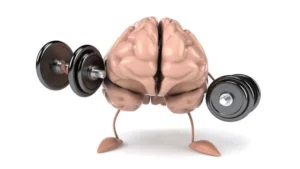What is Family Therapy?

What is Family Therapy?
Family therapy is a psychological method applied to the family in order to solve their psychological problems. Some disorders that seem to affect only one member of the family are often rooted in or reinforced by unconscious conflicts within the family.
The family therapist helps to uncover and resolve these hidden conflicts. They also support family members to be open with each other and to respect each other.
Family therapy has its roots in work carried out in the United States in the 1950s. Already at that time, social workers realized that most of their clients' problems should be considered and evaluated within the concept of family.
Because a person's health and psychological development is primarily influenced by his/her family and then by his/her social environment. As a result, some experts have started to invite the family to counseling sessions and include them in psychotherapy processes.
Systemic therapy, an independent psychotherapy method, was developed from family therapy practices. Since family therapy and systemic therapy are closely related, family therapists are also trained in systemic therapy.
However, family therapy does not depend on any one form of therapy. Cognitive behavioral therapists, behavioral therapists, logotherapists, existential and dynamically oriented (psychoanalytic psychotherapy) therapists also offer family therapy services.
In family therapy, the therapist involves everyone who plays a role in the client's healing process. In a narrow sense, the focus is not only on the family. In family therapy, the term family has been broadened to include groups formed in different ways, for example Patchwork-Family.
When should family therapy be done?
Family therapy is often used when a person's problems are directly related to their family. Especially with children and adolescents, it is important to involve the family in the therapy.
The influence of the family on children's development is very important. Mental disorders in children and adolescents can result from disrupted family patterns and systems. For example, many young people with eating disorders may have parents who also had eating problems, over-emphasis on body shape or obsession with high performance.
However, the aim of the therapy is not to show that the family is to blame for the problems. Rather, the main aim is to identify negative interactions and explore solutions.
Family therapy is also useful if changes in the family's existing order are causing problems. A family therapist can help and support a family in the event of divorce or when a new partner joins the family after separation. Similarly, the death of a family member can upset the balance in the family.
What is done in family therapy?
The family therapist deals with the situation and feelings of each member of the family. He or she does not take sides. This means that the therapist tries to empathize with each member of the family without privileging one person. In this way, the therapist allows each member of the family to reflect his or her own perspective and needs.
The progression process in family therapy can vary according to different therapy approaches. Despite the different methods of progression, there are certain commonalities in the process.
Before each psychotherapy session, a trusting relationship and communication between the therapist and family members must be established. One of the most important issues in family therapy is communication between individuals. In this context, problems of misunderstanding and misunderstanding often arise because wants and needs are not fully and clearly expressed. The aim of the therapy is to change the existing type of communication and thus improve the relationships within the family.




